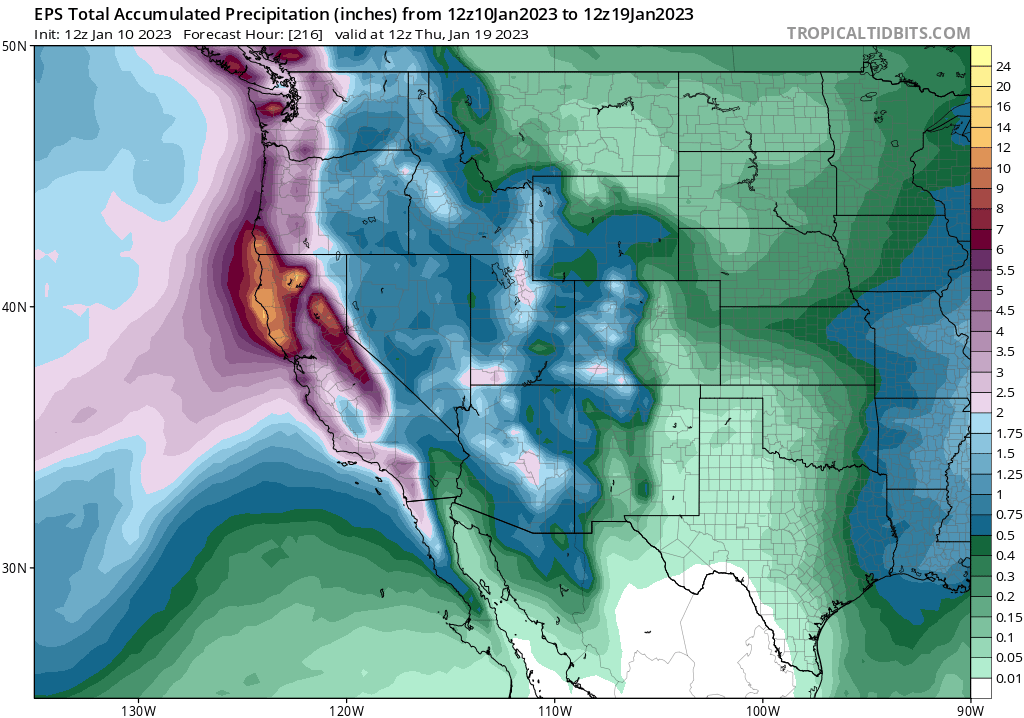
Additional widespread precipitation is likely over the next 8-9 days over the northern 2/3 of CA, and it will be heavy at times (especially northern third of CA). Strongest storm, with some more heavy rain, wind, and thunderstorms, is due in on Sat. #CAwx #CAwater [1/4] 

However, these are primarily areas that have not been nearly as wet as central CA recently. Also, these will generally be colder storm systems, bringing a greater balance of snow (vs rain) in mountains & somewhat limiting higher elevation runoff. #CAwx #CAwater [2/4]
For these reasons, although there will be *some* additional flooding, it increasingly look like *most* of CA will probably thread the needle--thereby avoiding a more widespread/severe flood scenario. Massive Sierra snowfalls are possible during this period! #CAwx #CAwater [3/4]
And there is now a plausible end in sight: multi-model ensembles continue to suggest a return to a West Coast ridge pattern in about 9-10 days (by Jan 20)--probably giving folks a much-needed chance to dry out and dig out. #CAwx #CAwater [4/4] 

• • •
Missing some Tweet in this thread? You can try to
force a refresh














